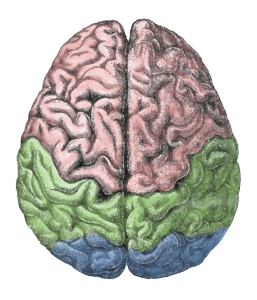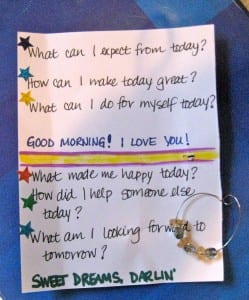Why is Mindful Parenting Important?
Mindfulness is all the rage these days, having inspired a magazine, at least one NFL coach, some school districts, and much more. But why is mindful parenting something you should think about?
In my experience, mindfulness in parenting has benefits for the whole family, and, I suspect, our larger community as well. It results in a calmer household, less escalation and power struggles, and fewer misunderstandings.
I once heard Gloria Steinem say, “Our children will never know that they have anything to say unless someone listens to them.” She is right, and our children want to be heard, but if the person they are speaking to has their eyes diverted to a pan of noodles on the stove or the glow of a laptop or a smart phone, they aren’t really being heard, even if we think every word has penetrated our brains.
When our children are intent on sharing something with us – especially as tweens and teens – it is in our best interest to really pay attention because if we don’t, one of two things can happen: they give up trying, or they ratchet up the emotion a notch.
Every time our children attempt to tell us how they’re feeling, we are presented with an opportunity to connect with them and try to understand them better. Making eye contact, shutting the laptop and taking a moment to listen without judging or jumping to conclusions sends the message that what they are saying is important, that we value their time and willingness to come to us. Even when it is something that feels trivial to us as adults, it is vital to let our kids know that we acknowledge their concerns.
If we belittle their emotions, either by not paying full attention or by laughing it off, we have effectively told them that their perceptions are not real, that there is something wrong with the way they feel or see things. If your child is embarrassed or ashamed of having come to you because of your reaction, they won’t likely try again for a while unless they are absolutely certain you will see things their way. If they believe that their feelings are valid and you just aren’t “getting it,” they will talk louder, exaggerate, or act out in an attempt to get you to see things the way they do. Both scenarios make your life as a parent more challenging.
Once your child has your attention and you are truly listening to what they have to say, you can focus on their facial expressions and tone of voice to discern even more about the situation. Listening without forming your own opinion or letting emotion take over lets you ask questions to help clarify details. Some of my favorite mindful parent questions are:
- do you just need to vent or is there something I can do to help? (This one is especially helpful for me, because then I know if my role is just to listen quietly or begin thinking about ways to help my child manage the situation.)
- why do you think this happened? (This gets their brain to switch from emotional response to trying to see the issue as something they can learn from.)
- what is the worst part of this for you? (This question is vital to understanding what exactly they are afraid of. I am often surprised by the answers my kids give.)
When we parent mindfully, we are more careful not to judge our children or blame them or say things we wish we could take back. We can begin to let our adolescents know that we trust them to deal with challenging situations and that their burgeoning independence will not be squashed if they come to us needing help or advice. And we can model calm problem-solving techniques for them instead of jumping right to shaming and blaming and talk of punishment.
It is not often convenient to take the time to fully focus on your child when they come to you with a problem (or when you overhear something or sense that they have had a rotten day), but the more you do, the more they will believe that what is important to them is important to you and you will forge a deeper, more trusting relationship with your child. You may even see that they are willing to put down their phones when you come into the room to talk to them.



